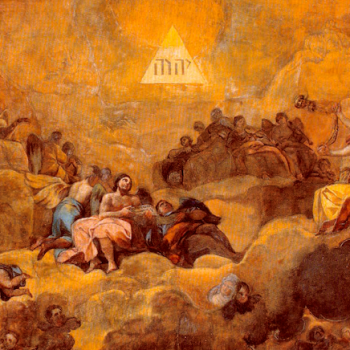Go here for Parts One, Two, and Three.
Enter the Implications
Okay. So most people are straightforwardly one sex or the other, but there’s a tiny minority who have a mixture of characteristics from both. Big deal. What does this have to do with transgender ideology? Simone de Beauvoir famously wrote that “One is not born but becomes a woman” in The Second Sex, but you don’t become intersex—in its own way, it’s as “objective” as male and female are.
Well, the fact that such mixtures can and do exist raises a question. What is gender?

Is it simply a word for what kind of body your soul inhabits, without any metaphysical element of its own? If so, then logically, there are at least as many genders as there are kinds of body: even if only a tiny number of people have, say, a 60%-40% male-female blending of traits, at least that tiny number of people have a gender that’s 60% masculine and 40% feminine. Unless we’re going to say that your gender is whichever sexed traits predominate; but if so, why? That certainly implies that the 40% female part is, in some sense, not supposed to be there—but if that’s true, then gender is clearly something other than just “what kind of body your soul inhabits,” because we’re deciding how the body should be based on pitting some metaphysical masculinity against the actual, quantifiable female part of it.
Or maybe masculine and feminine genders are metaphysical realities, and there are no in-betweens or mixtures, but the body determines (or at least always shows) which one you have. But this doesn’t work, because in that case, intersex people’s bodies should be not merely rare, but categorically impossible.
The Law of Their Members

Okay. Well, perhaps gender is normally revealed by the body, but can sometimes be in conflict with it—either because God meant the body to be something far more subtle than we’ve yet understood, or because the fallen world we live in can interfere with the proper relationship between body and soul.
Considering that disease and death are both features of our bodies in a fallen world, this second possibility seems pretty reasonable. And judging from intersex conditions, if we’re not willing to admit that more than two genders can exist, we kind of have to admit that there can be a conflict between metaphysical gender and physical sex.
But once we countenance that possibility, how can we dismiss the possibility of transgender identities? The whole idea is that there can be some kind of mismatch between the person’s sense of who they are, or are meant to be, and the physical reality of their body. We know that exists already. Why is the specifically trans version so definitely off-limits?

Either/Or
Based on what we know about intersex people, as far as I can tell, only one of two possibilities is reasonable for Catholics:
- “Gender” is simply a name for how the soul inhabits the sexed body, with the corollary that—while the overwhelming majority of people are either male or female—there are, technically, as many genders as there are varieties of intersexuality.
- “Gender” is a name for some kind of metaphysical or spiritual reality, distinct from physical sex, with the corollary that trans identities may be valid.
Option 1 here seems to line up with the general tenor of Theology of the Body, though that work doesn’t explore intersexuality (if I recall correctly). It has the obvious merit of simplicity, and the drawback of making certain things harder to understand; it’s difficult to see any reason why Holy Orders should be restricted according to sex on this view, for example.

Option 2, to me, feels much more intuitive. It’s given explicit expression by C. S. Lewis near the end of Perelandra and throughout much of That Hideous Strength (both of which were published several years before The Second Sex, in case anyone cares to claim that C. S. Lewis of all people was doing a gender ideology under the influence of radical French feminism). It would be foolish to argue that any one culture’s social conventions about gender are absolute; yet the mere fact that gender conventions exist so widely at all suggests that most societies recognize something more than the sex of the body is involved here.
Oldfangled
Moreover, gender conventions aren’t the only things that most cultures and periods seem to have. People talk sometimes as if being trans were a modern fad, invented by Satanic feminists in order to destroy gender and dethrone God and make your kids use swears. And while it’s true that modern ways of thinking about the experience of trans people are, well, modern—as is the word “transgender” itself—the thing they were designed to articulate and explain is not.
Time for a history lesson.












